Acne affects 85% of teens and 15% of adult women. Treating it can be tough, especially when it causes burning sensations. Let’s explore acne treatments, their side effects, and how to manage them12.
Adult acne is on the rise, particularly among women. This article covers safe treatments, handling side effects, and when to see a doctor3.
I’ll share my experiences to help you achieve clearer, healthier skin. Let’s dive into the world of acne treatment together.
Key Takeaways
- Understanding acne causes and treatments is key to managing it effectively.
- Some treatments may cause burning due to strong ingredients or incorrect use.
- Manage side effects by reducing usage, moisturizing, and avoiding harsh products.
- Seek help for persistent side effects or lack of improvement.
- Benzoyl peroxide has been used for over 60 years and can be effective1.
At-home acne treatments usually take 6-8 weeks to show results. Expect fewer breakouts in 4-8 weeks and clearing after 16 weeks of consistent use23.
Be patient with your skincare routine. Consult a dermatologist if you need more guidance. Remember, everyone’s skin is unique.
Visit us for reviews on beauty supplies. We cover acrylic nails, nail polish remover, hair color kits, and more. Find the best products for your beauty needs.
Understanding Acne and Its Causes
Acne is a common skin condition affecting millions worldwide. It causes various blemishes like whiteheads, blackheads, and pustules. In severe cases, it can lead to cysts and nodules.
What Is Acne?
Acne occurs when hair follicles get clogged with excess oil and dead skin cells. This creates an ideal environment for bacteria to grow. The face, chest, and back are most commonly affected.
At least 85% of people in the U.S. experience acne between ages 12 and 24. Inflammatory acne happens when clogged pores become infected, causing redness and swelling.
Cystic acne forms painful, pus-filled lumps under the skin. It’s more common in teens and young adults. However, it can affect people from age 8 to 504.
Factors Contributing to Acne Development
Several factors can contribute to the development of acne, including:
- Excess sebum production: Overactive sebaceous glands can lead to an increase in oil production, making the skin more prone to clogged pores and bacterial growth.
- Hormonal changes: Fluctuations in hormones, particularly during puberty, menstruation, and pregnancy, can trigger an increase in sebum production and acne flare-ups.
- Bacterial infection: Propionibacterium acnes (P. acnes) is a bacteria that thrives in the excess oil produced by the sebaceous glands, contributing to the inflammation and formation of acne lesions.
- Genetics: Individuals with a family history of severe cystic acne have a higher likelihood of developing it themselves4.
- Diet: Research suggests that people who consume a diet rich in vitamins A and E and zinc may have a lower risk of severe acne5.
Severe cystic acne is more common in men. Women with cystic acne often have cysts on their lower face4. Understanding acne’s causes helps people find effective treatments.
Acne affects 3 in 4 people aged 11 to 30 years. It’s a widespread concern for many individuals5.
Visit us for top reviews on beauty supplies. We cover acrylic nails, nail polish removers, and hair color kits. Find info on hair growth serums, skincare routines, and moisturizers for dry skin.
Discover the best vegan and cruelty-free makeup options. Learn about anti-aging creams, foundations for oily skin, and top-rated makeup brushes. Don’t miss our take on the best beauty blender.
Common Acne Treatment Options

Acne treatments vary from over-the-counter remedies to prescription medications and aesthetic procedures. The best option depends on your acne severity and skin type. Let’s look at some popular acne treatments.
Over-the-Counter Acne Medications
OTC products can help with mild to moderate acne. They often contain salicylic acid and benzoyl peroxide to unclog pores and reduce inflammation6. These treatments may cause initial side effects like redness and dryness7.
Prescription Acne Treatments
Moderate to severe acne may require prescription treatments. Topical retinoids, like tretinoin, increase cell turnover and prevent clogged pores7. Other options include benzoyl peroxide or clindamycin-based topical medications6.
Oral antibiotics fight bacteria when topical treatments aren’t enough6. For women, birth control pills can regulate hormones and improve acne6. Prescription medications may take 4-8 weeks to show results7.
Aesthetic Treatments for Acne
Aesthetic treatments can help manage severe acne and its effects. These include drainage, extraction, laser therapy, chemical peels, and microdermabrasion6. They can reduce scars and even out skin tone.
Always have these treatments done by a qualified professional for safety and effectiveness.
| Acne Severity | Treatment Options |
|---|---|
| Mild to Moderate | Over-the-counter acne medications (salicylic acid, benzoyl peroxide) |
| Moderate | Topical retinoids, azelaic acid cream or gel, prescription topical medications |
| Moderate to Severe | Oral antibiotics, birth control pills (for women) |
| Severe | Isotretinoin, aesthetic treatments (drainage, extraction, laser therapy, chemical peels, microdermabrasion) |
Everyone’s skin is unique, so consult a dermatologist for personalized treatment. With the right approach, you can achieve clear, healthy skin.
Visit us for top beauty supply reviews. Find the best hair color kits, acrylic nails, anti-aging creams, and more. We cover everything from skincare routines to vegan and cruelty-free products.
Why Some Acne Treatments Cause Burning Sensations
Acne treatments often cause burning sensations and skin irritation. This is common with products containing potent ingredients like benzoyl peroxide or salicylic acid8. Acne affects millions of Americans, and treatment depends on its severity9.
Potent Ingredients Irritating the Skin
Many acne treatments have active ingredients that can be harsh on sensitive skin. Prescription medications for severe acne include topical retinoids, antibiotics, and isotretinoin9.
These strong ingredients may cause skin sensitivity, redness, and burning. Dryness, itching, peeling, or slight swelling can also occur, especially with benzoyl peroxide98.
Overusing salicylic acid, AHAs, vitamin C, and retinoids can also irritate the skin10. It’s crucial to follow product instructions carefully.
Skin Adjusting to New Products
When starting a new acne treatment, your skin needs time to adjust. Adverse reactions may happen as your skin builds tolerance to certain ingredients.
It can take up to six weeks for skin to adapt to retinoids or salicylic acid9. During this time, you might experience dryness and irritation.
Incorrect Product Usage
Using acne treatments incorrectly can lead to skin irritation9. Applying too much product or using it too often causes burning sensations and dryness.
Follow the instructions provided with your acne treatment. Introduce new products gradually to minimize the risk of adverse reactions.
| Common Irritants in Acne Products | Potential Side Effects |
|---|---|
| Benzoyl peroxide | Redness, burning, dryness, itching, peeling, swelling8 |
| Salicylic acid | Skin irritation, dryness, peeling810 |
| Retinoids | Skin sensitivity, dryness, peeling, irritation10 |
| Alpha hydroxy acids (AHAs) | Skin irritation, redness, dryness10 |
If your skin doesn’t improve after two weeks or worsens, seek professional help10. Dry, irritated skin is more prone to breakouts. Manage side effects to maintain healthy, clear skin10.
Check back often for the best reviews on beauty supplies. Find info on skincare routines, moisturizers, vegan products, and cruelty-free makeup. We also cover anti-aging creams, foundations, makeup brushes, and beauty blenders.
Is Acne Treatment Supposed to Burn?

My first experience with acne treatments was surprising. The 2.5% benzoyl peroxide from acne.org caused a burning sensation. It faded quickly, but I wondered if this was normal.
Mild tingling or stinging can be common with acne treatments. However, extreme pain or discomfort shouldn’t be ignored. Many users report redness, itching, and burning after application.
Some people feel intense burning when using benzoyl peroxide. This can happen if products are too strong or used incorrectly. Start with a small amount and slowly increase to avoid severe reactions.
Your skin may need time to adjust to new products. Reactions often lessen with repeated use over several weeks. Dermatologists suggest starting with lower concentrations and less frequent use.
For benzoyl peroxide 2.5%, apply a thin layer one to three times daily. It’s best to start with one application to prevent excessive drying.
| Safe Acne Treatment Practices | Potential Side Effects |
|---|---|
| Start with lower concentrations | Burning sensations |
| Apply thin layers | Redness and itchiness |
| Gradually increase frequency | Excessive dryness and peeling |
| Monitor skin’s reaction | Rashes and swelling |
Stop using products if you feel extreme pain or see severe side effects. These may include rashes, blisters, or hyperpigmentation. Sensitive skin or using too much benzoyl peroxide can cause burning and redness.
Some people have reported using too much benzoyl peroxide. This led to burning, redness, swelling, and discomfort. Some even needed medical attention11.
Watch how your skin reacts to acne treatments. Talk to a dermatologist if irritation doesn’t improve or gets worse. With careful use, you can manage acne while avoiding skin damage.
Visit us for reviews on beauty supplies. We cover acrylic nails, nail polish remover, hair color kits, and more. Find the best products for your skincare and makeup needs.
Managing Side Effects of Acne Treatments
Acne treatments can cause skin reactions like peeling, burning, dryness, and redness. These side effects often occur at the start of treatment. Taking proactive steps can help minimize discomfort and maintain your commitment to clearer skin.
Reducing Frequency or Concentration of Application
Start with a lower concentration or apply products less frequently to manage side effects. This allows your skin to adjust to potent ingredients. Gradually increase usage as your skin adapts.
Doctors recommend continuing acne treatment for at least twelve weeks before evaluating its effectiveness12. This approach minimizes irritation risk and helps you stick to your routine.
Using Moisturizers to Combat Dryness
Acne treatments can cause dryness and flaking. Use a non-comedogenic moisturizer to combat these effects. Look for products made for acne-prone skin to hydrate without clogging pores.
Apply moisturizer morning and evening after cleansing and acne treatments. This added hydration soothes irritated skin and maintains a healthy barrier.
Avoiding Harsh Scrubs and Cleansers
Be gentle with your skin when dealing with acne and treatment side effects. Avoid harsh scrubs or cleansers that strip natural oils. Choose a mild, non-foaming cleanser to remove dirt without disrupting skin balance.
Cleanse your face gently twice daily with lukewarm water. Pat your skin dry with a soft towel. This care minimizes side effects and promotes comfortable healing.
| Acne Treatment | Common Side Effects | Management Strategies |
|---|---|---|
| Benzoyl Peroxide | Dryness, redness, peeling | Start with lower concentration, use moisturizer |
| Salicylic Acid | Burning, redness, irritation12 | Reduce frequency of application, avoid sensitive areas |
| Topical Retinoids | Dryness, flaking, sensitivity to sun | Use a pea-sized amount, apply sunscreen daily |
Managing acne treatment side effects is crucial for clearer skin. Reduce irritation, moisturize, and be patient with your progress. Stay committed to your skincare routine for best results.
Consult a dermatologist if you experience persistent or worsening side effects. Check back for reviews on beauty supplies and skincare products.
When to Seek Professional Help
Some mild skin reactions are normal when starting new acne treatments. However, persistent issues require expert advice. A dermatologist can help ensure your skin’s health and prevent further damage.
Persistent or Worsening Side Effects
Severe burning, excessive dryness, or rashes after using acne treatments signal a need for professional guidance. Skin products causing redness, patchiness, or flaking require immediate consultation with a skincare expert13.
Severe chemical burns may need emergency hospital care14. Seek medical help for severe pain, rapid rash spreading, or swelling in the mouth or throat14.
A dermatologist can assess your skin’s condition and suggest appropriate treatment adjustments. They’ll help you find safer, more effective solutions for your acne concerns.
Lack of Improvement in Acne Severity
If acne treatments show no results after several weeks, it’s time to consult a professional. Some treatments may cause initial worsening of symptoms15.
A dermatologist can evaluate your skin’s unique needs and recommend more effective products. They might prescribe stronger treatments or suggest in-office procedures to clear your acne.
Remember, everyone’s skin is different, and what works for one person may not work for another. A dermatologist can help you navigate the vast array of acne treatments available and create a personalized plan tailored to your specific skin concerns and goals.
Visit us for top beauty supply reviews. We cover acrylic nails, nail polish removers, hair color kits, and growth serums. Find the best skincare routines, moisturizers, and vegan beauty products here.
Discover cruelty-free makeup, anti-aging creams, and foundations for oily skin. We also review top makeup brushes and beauty blenders.
Benzoyl Peroxide: A Common Acne-Fighting Ingredient
Benzoyl peroxide is a powerful acne-fighting ingredient in many over-the-counter products. It targets acne-causing bacteria and reduces skin inflammation16. Available in 2.5% to 10% concentrations, it suits various skin types and acne severities17.
How Benzoyl Peroxide Works
Benzoyl peroxide fights acne by releasing oxygen into the skin, killing bacteria. A 10% product can reduce P. acnes bacteria by 98% in two weeks17.
This ingredient is found in creams, lotions, washes, foams, body washes, soaps, and gels. These offer different application methods and concentrations for individual needs16.
Expectations and Timeline for Results
Benzoyl peroxide treatments may show some improvement within weeks. However, full effects can take up to six weeks to appear16.
Consistency is crucial when using this ingredient. If no significant improvement occurs after six weeks, consult a dermatologist for other options.
Managing Side Effects of Benzoyl Peroxide
Some people may experience side effects when starting benzoyl peroxide treatment. Common issues include dryness, redness, peeling, itching, and irritation16.
To minimize side effects, start with a 2.5% or 5% concentration. Gradually increase strength if needed17. Apply an oil-free moisturizer to combat dryness and irritation.
| Benzoyl Peroxide Concentration | Suitable for | Potential Side Effects |
|---|---|---|
| 2.5% | Sensitive skin, initial treatment | Mild dryness, redness |
| 5% | Moderate acne, most skin types | Dryness, peeling, irritation |
| 10% | Severe acne, resilient skin | Significant dryness, peeling, irritation |
Benzoyl peroxide can bleach fabrics, so be careful when applying it. Avoid contact with clothing, towels, and bedding17.
In rare cases, allergic reactions may occur. Stop using the product immediately if this happens. Seek medical attention for severe reactions16.
The American Academy of Dermatology recommends benzoyl peroxide as a topical treatment for acne, highlighting its effectiveness and versatility in managing breakouts17.
Our site offers reviews on top beauty supplies. Find the best makeup brushes, vegan hair care, anti-aging serums, and foundation for combination skin.
Discover luxurious skincare routines, hair growth treatments, and acrylic nail kits. We also feature gentle nail polish removers, vibrant hair colors, and hydrating moisturizers.
Check out our recommendations for cruelty-free cosmetics and innovative beauty blenders. Stay tuned for more beauty insights and product reviews.
Conclusion
Acne management can be tough, but understanding its causes and treatments can help. You can work towards clearer skin by exploring options and practicing safe treatments. Some treatments may cause burning or irritation, but these effects can often be managed.
Studies show that most people with acne have the inflammatory type18. This is considered a more severe form of the condition. If side effects persist or worsen, or if your acne doesn’t improve, consult a dermatologist.
When choosing a skin care professional, consider their training, experience, and success rate18. Seeking professional help is a proactive step towards achieving your skin health goals.
Be patient with your skin during your acne journey. Consistency and gentleness are key for effective acne management. Use moisturizing products to support your skin’s barrier and reduce irritation.
Remember, you’re not alone. Millions worldwide are working towards clearer skin. Stay informed about beauty trends and products. Check back often for reviews on acrylic nails, nail polish removers, hair color kits, and growth serums.
FAQ
Is it normal for acne treatments to cause a burning sensation?
What causes acne?
What are the common acne treatment options?
How can I manage the side effects of acne treatments?
When should I seek professional help for my acne?
How long does it take for benzoyl peroxide to work on acne?
Source Links
- Your Week-By-Week Guide to Treating Acne With Benzoyl Peroxide – https://www.verywellhealth.com/benzoyl-peroxide-treatment-15951
- Top Acne Treatment Mistakes: Popping Pimples, Overdoing Products, and More – https://www.webmd.com/skin-problems-and-treatments/acne/features/acne-treatment-mistakes
- Adult acne treatment dermatologists recommend – https://www.aad.org/public/diseases/acne/diy/adult-acne-treatment
- Cystic Acne – https://www.webmd.com/skin-problems-and-treatments/cystic-acne
- Acne: Causes, treatment, and tips – https://www.medicalnewstoday.com/articles/107146
- Acne Treatment: Types, Side Effects, and More – https://www.healthline.com/health/acne-treatment
- Acne – Diagnosis and treatment – https://www.mayoclinic.org/diseases-conditions/acne/diagnosis-treatment/drc-20368048
- A Topical Issue – Serious Hypersensitivity and Burning Reactions – https://www.medsafe.govt.nz/profs/PUArticles/March2015HypersensitivityAndBurningReactions.htm
- Acne Medication And Burns: Everything You Need To Know – https://navamd.com/face-forward-blog/acne-medication-and-burns/
- Skin irritation: what’s causing it and how to stop it | Curology – https://curology.com/blog/the-burn-means-its-working/
- No title found – https://www.acne.org/forums/18-acneorg-products/318950-is-benzoyl-peroxide-supposed-to-burn
- Salicylic Acid – acne support – https://www.acnesupport.org.uk/treatment/salixylic-acid/
- Are skincare products supposed to burn? | Skin Perfection – https://www.skinperfectionlondon.co.uk/2021/12/are-skincare-products-supposed-to-burn/
- How to treat a chemical burn on the face from skin care – https://www.medicalnewstoday.com/articles/chemical-burn-on-face-from-skin-care
- Skin Purging – What Is It and What Medications Can Cause It? – https://miiskin.com/acne/skin-purging/
- Benzoyl Peroxide for Acne: How it Works and How to Use It – https://www.healthline.com/health/benzoyl-peroxide-for-acne
- Benzoyl Peroxide – StatPearls – NCBI Bookshelf – https://www.ncbi.nlm.nih.gov/books/NBK537220/
- Facials for acne: Use and effectiveness – https://www.medicalnewstoday.com/articles/facials-for-acne


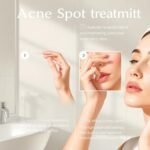
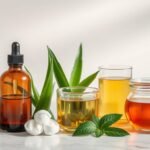
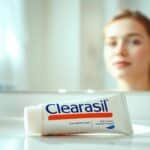

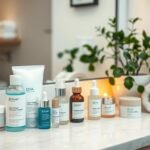
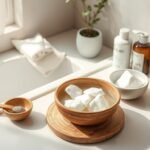
I disagree. Isnt it possible that the burning sensation is just your skins way of saying, This stuffs working? #ThinkAboutIt
Interesting read, but arent we overlooking the impact of diet on acne? What about the role of sugar and dairy products?
Honestly, if acne treatment doesnt burn a little, I question its effectiveness. Isnt a little pain part of the process?
Does anyone else feel like maybe acne is a sign were not supposed to smear chemicals all over our faces? Just a thought!
I think this article is missing the point. Isnt diet the root cause of acne? Lets start focusing on inner health, guys!
Interesting read but honestly, isnt it time we normalize acne instead of always seeking treatments that might just burn our skin?
Normalize acne? Easy to say when youre not the one suffering. Treatments exist for a reason.
Just read the article, guys. But, isnt acne just a teens right of passage? Why this obsession with perfect skin? Thoughts?
Isnt it ironic how they suggest burning your skin with acne treatment, yet we avoid sunburns? Just some food for thought.
Ever thought that medical treatments and sunburns arent in the same league? Rethink your irony meter.
Does anyone else think acne might be our bodys way of detoxing? Why suppress it with burning treatments? Just a thought.
Isnt it odd how were expected to trust acne treatments that almost feel like skin torture? Do they really need to burn to work?
Isnt it interesting how we just accept burning as normal in acne treatments? Maybe our skin is protesting, not healing? 🤔 #FoodForThought
Interesting read, but isnt acne sometimes just a natural part of puberty? Do we really need to medicalize everything?
Interesting read, but isnt it weird that were trying to treat skin issues with products that literally burn our skin? Just a thought.
So, if acnes caused by our own hormones, why arent we treating the cause instead of burning our faces off?
Is it just me, or is burning just the skincare industrys excuse for ineffective treatments? Maybe its time to rethink what works.
Interesting read, but isnt acne sometimes a sign of deeper health issues? Maybe were too fixated on symptom treatment, not root causes.
Why are we discussing acne like its a mystery? A healthy lifestyle & diet can keep it at bay! Isnt it that simple?
Honestly, isnt it possible that acne treatments burn because theyre secretly just cooking our skin? Food for thought.
Does anyone else feel like acne products burn because companies want us to think pain equals progress? Just a thought.